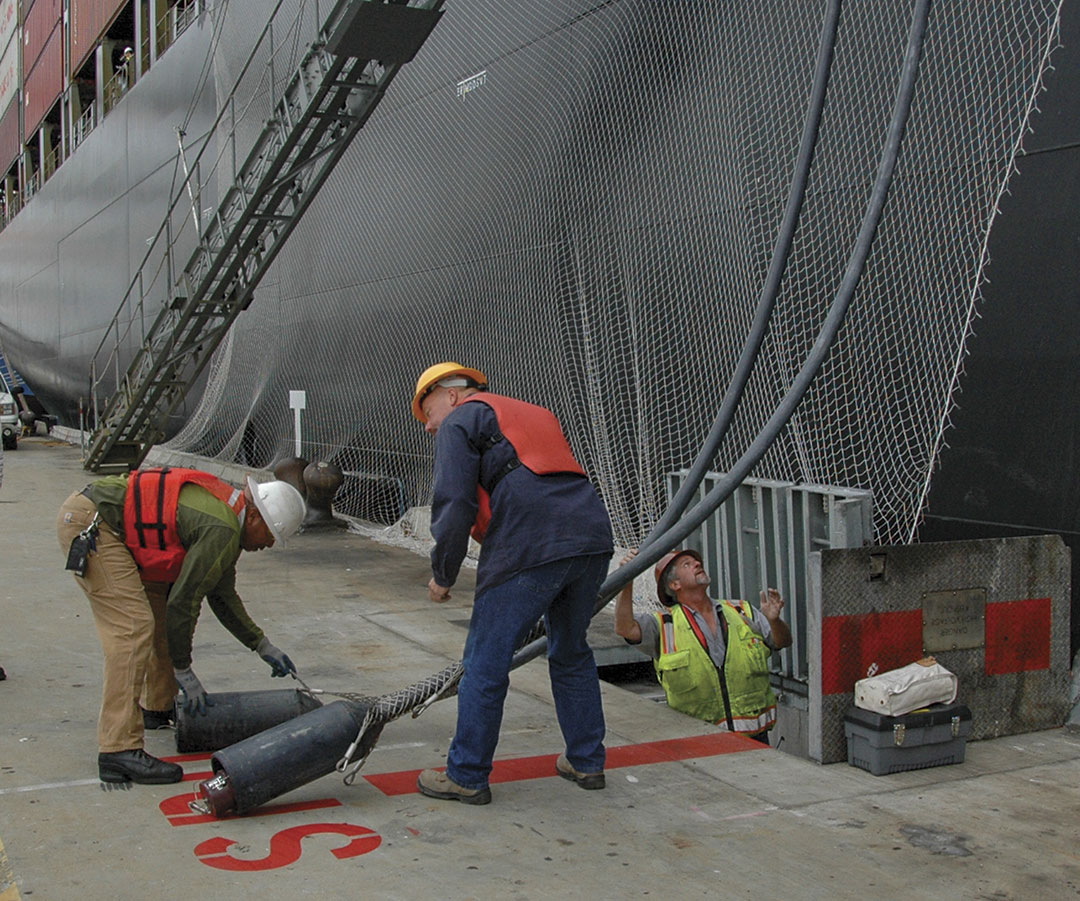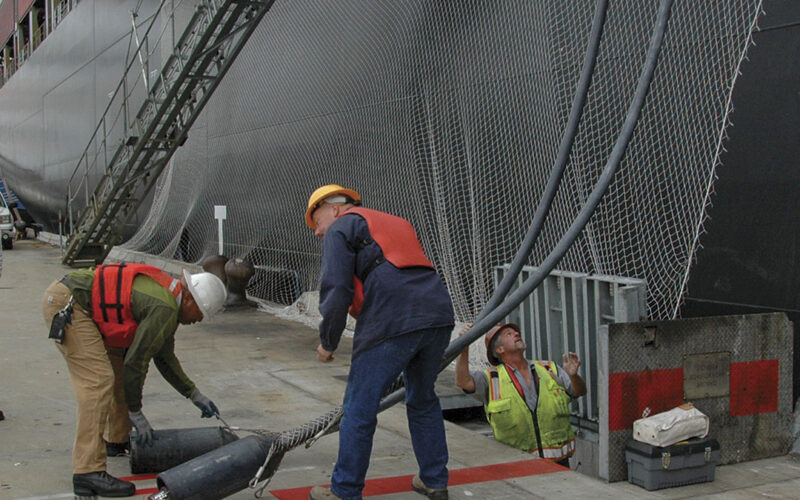
Ports on the West Coast are working toward a zero-emissions future thanks to advances in electrification, but cost remains an issue with state and federal funds helping to support their efforts.
Decades ago, forward thinking positioned the Port of Oakland in California as the first major deep-water port on the U.S. Pacific Coast to build terminals for container ships.
Today, the port’s leadership is busy implementing a new, updated Seaport Air Quality 2020 and Beyond Plan: The Pathway to Zero Emissions plan, which lays out a pathway to zero emissions and was formalized in 2019.
At the heart of the emissions eradication plan is the use of clean electricity to fuel battery-electric mobile equipment and, most importantly, provide power to berthed vessels.
The San Francisco Bay area port’s shore power program was actually completed in 2014.
“In terms of electrification, and in shore power specifically, we’ve actually learned a lot since then. What works, what doesn’t work as well, what can be improved upon,” said Tim Leong, the Port of Oakland’s senior maritime projects administrator.
For example, the port’s first shore power connection vaults were positioned in fixed locations at the port’s terminals. That worked at the time, but the size and configurations of today’s newer, much larger vessels make the development of mobile shore power plug-in systems absolutely critical.
The solution, said Leong, is a power station mounted on the water side of the wharf that moves along a track, much like a container crane.
Plans call for two remotely-controlled, mobile systems to be in operation sometime in 2025. “It won’t change the number of plug-in vessels, but it will allow a lot more flexibility,” Leong said.
Leong said the port’s tenants are keenly aware that stricter regulations are on the horizon and are working closely with port officials to prepare. “There really is a push right now in terms of planning, to be able to say, ‘Okay, let’s figure out what are the zero-emission technologies available to us? What are the ones that are going to make the most sense for our operations?’ ” he added.
Further south along the California coastline, the Port of San Diego is also actively addressing the issue of electrifying its berths.
“Our tenants also believe thriving business and electrification don’t need to be mutually exclusive,” according to Vice President of Maritime Michael LaFleur.
This summer, the port unveiled a shoreside solar-charging station designed to provide clean energy for Crowley’s first zero-emissions, ship assist tug, the 82-foot eWolf, which is expected to arrive next year.
Over the first 10 years of its use, the operation of the new vessel is expected to eliminate 178 tons of nitrogen oxide (NOx), 2.5 tons of diesel particulate matter, and 3,100 metric tons of carbon dioxide (CO2) versus emmissions produced by a conventional tug, according to Crowley.
All electrification efforts come at a cost – for example, adding a single shore-power plug can cost between $7 and $14 million, depending on how much infrastructure needs to be updated, LaFleur said.
He noted that because the port does not collect tax dollars, funding and support from other sources is critical to the port meeting its electrification goals.
The eWolf and its charging station, for example, are the result of a partnership with the San Diego County Air Pollution Control District, the California Air Resources Board, the U.S. Environmental Protection Agency, and the U.S. Maritime Administration.
Most recently, the Port of San Diego invested $4.6 million to complete a shore power expansion system that permits two cruise ships to simultaneously use shore power instead of running their diesel engines while at berth.
To help address the funding issue, the EPA is currently developing a Clean Ports Program with $3 billion in funding from the Inflation Reduction Act to support the development of climate action plans to reduce air pollutants at American ports, and fund the purchase or installation of zero-emissions technology. The agencies anticipate releasing a notice of funding opportunity in late winter 2024.
In addition to doubling shore power at the cruise terminals, the port has deployed a so-called bonnet system to control and capture emissions from vessels that aren’t yet equipped to connect to shore power.
The port also celebrated the delivery of two new all-electric harbor cranes this past summer.
To the north, the Port of Everett in Washington state predominantly handles the breakbulk and project cargoes carried aboard ships that are, as a rule, relatively smaller than the latest generation container carriers, according to Erik Gerking, the port’s senior director of environment, planning, and strategic projects.
Despite the surge in electrification projects, challenges remain. At the Port of Everett, the issue revolves around the fact that there is no universally standardized technology which would allow the specialized carriers that call at the Pacific Northwest port to convert their ships’ propulsion systems to utilize shoreside electrical power.
As a result, the ships that call at the Port of Everett do not have access to plug-in shore power. That is, not yet.
“As we anticipate global standardization in the future, we are seeking to secure federal funding,” said Gerking. “The funding will assist in designing and integrating plug systems when ship compatibility and standards are firmly established.”
To prepare for that eventuality, the port is enhancing its infrastructure to support the addition of shoreside power as part of its $57 million South Terminal modernization project, which opened in 2021, and at their new $40 million Norton Terminal that opened in 2022, he added.
The Washington state legislature has awarded the Port of Everett $5 million in community project funds to expedite plans to electrify its Pier 3.
When the work is complete, port leaders will be able to stop using diesel generators, which consume more than 60,000 gallons of diesel annually.
Constructed in 1973, the 15-acre, 650 foot Pier 3 facility is one of two finger piers at the Port of Everett, offering ship berths of 650-feet on each side, with a total usable berth length of 1,300 feet.
The pier accommodates general, breakbulk and project cargoes, forest products and bulk cement handling.
Pier 3 has undergone a series of upgrades since the 1990s, and when the latest upgrades are completed. It is expected that more than 630 tons of carbon dioxide will be eliminated in the first year alone. •

